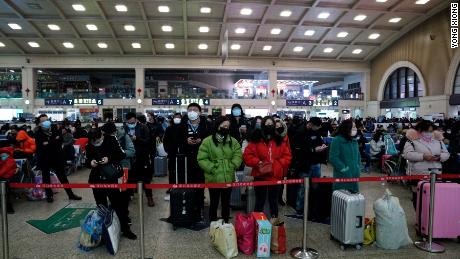A visual guide to the Wuhan coronavirus
An outbreak of new coronavirus in China has sickened more than 500 people and killed at least a dozen, while spreading to countries around the world.
Its emergence has fueled fears of a deadly epidemic as hundreds of millions of people travel in China, or around the Asian region, for the Lunar New Year holiday.
What is the virus?
Coronavirus is a large family of viruses, which include severe acute respiratory syndrome (SARS) and Middle East respiratory syndrome (MERS).
Common symptoms include a runny nose, cough, sore throat, and possibly a headache. Those who have a weakened immune system, particularly the young and the elderly, are at risk of the virus turning into a more serious respiratory tract illness.
Authorities said the Wuhan coronavirus was passed from animals to humans; can be spread from person to person; and appears to cause pneumonia in people who have weakened immune sytems.
In one instance, 14 doctors and nurses operating on a patient -- who was not known to be carrying the virus -- were all infected with it, suggesting it can be spread relatively easily.
Where is this happening?
Where it started: Ground zero
The outbreak emerged last month in the largest city in central China, Wuhan, a city of 11 million people in Hubei province.
Officials linked it to Huanan Seafood Wholesale Market, saying wild animals sold there are the likely source of the virus. The market has been closed since January 1 for disinfection and officials are scrambling to discover its animal source.
At least nine people have died in the province, the majority of them elderly and suffering from pre-existing conditions.
As deaths mount in the city, officials imposed a number of new measures including the postponement of New Year celebrations in Wuhan, a ban on tour agencies from bringing groups of people out of the city and thermal monitors and screening in public spaces.
Regional spread
From the first reported case in December, in Hubei province, the virus has spread to more than 20 provinces in China this week.
The country has adopted prevention and control measures that are typically used for major outbreaks such as plague and cholera. This means health officials will get sweeping powers to lock down affected areas and quarantine patients.
It remains to be seen if Chinese officials will ramp up controls on travel, especially since millions are expected to be shooting across the country for the holiday season.
Meanwhile, the city of Wuhan made it mandatory for everyone to wear face masks in public places after confirmed coronavirus cases passed the 500 mark.
A global threat: Confirmed cases around the world
The virus has spread well beyond mainland China, so far to Thailand, Japan, South Korea, Taiwan and the United States.
Airports around the world have increased health screenings and implemented new quarantine procedures as officials race to slow the spread of the virus.
International flights from Wuhan
Wuhan is a major transportation hub.
Not only is it a center for China's high-speed rail network, it has flights going to more than 60 international destinations from Tianhe International Airport.
In Wuhan itself, infrared thermometers have been installed at the airport, train stations, coach terminals and passenger piers to measure the temperatures of passengers departing the city, according to state media.
China is also encouraging passengers traveling to and from Wuhan to change their travel plans during the busy Lunar New Year holiday period, by exempting them from service charges for refunds for all modes of transport.
How does this compare to the SARS virus?
Death rates
Scientists say the infectiousness of the virus is not as strong as SARS, but have added that the number of people infected is climbing.
A study by researchers in the UK estimated that the number of infections in Wuhan is still grossly underestimated, with the real number closer to 4,000 as of January 18, based on the spread of the virus to other cities and countries in a relatively short period of time.
SARS infected more than 8,000 people and killed 774 in a pandemic that ripped through Asia in 2002 and 2003.
News Courtesy: www.cnn.com











